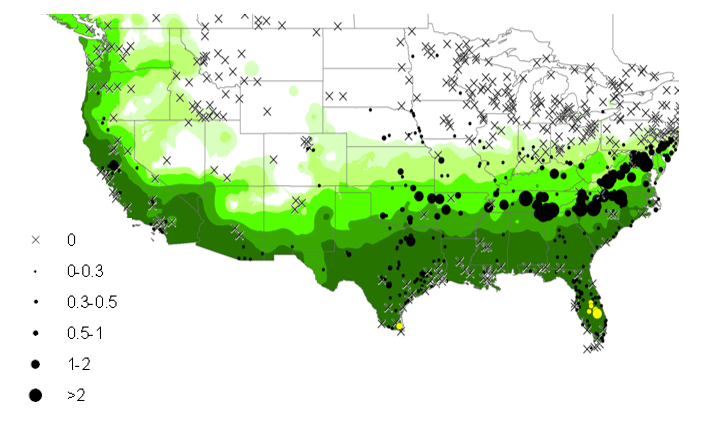Research Snapshot: Species distribution models
Species distribution models are an important tools for conservation. There are many types of distribution models available for ecological research and conservation. Our goal is to develop mechanistic distribution models for butterflies, which specify a priori mechanisms based on species biology to predict distributions, which can then be tested using independent occurrence data. For butterflies, most mechanistic distribution models involve at a minimum host plant availability and thermal tolerances and requirements. To the right is an example map from a distribution model for Sachems (Atalopedes campestris).
In addition, we are interested in models which explore spatio-temporal landscape use within a community. Joint dynamic species distribution models (JDSDMs) describe multiple species distributions and their correlations, allowing for change over time. This approach has been applied to describe seasonal butterfly density in Ohio based on citizen science survey data. This approach can also be used for species ordination to identify what species respond similarly to environmental conditions. This provides an avenue to better understand how communities of species may respond to environmental change. Some results from a JDSDM of Ohio butterflies are below.
Details
Publications
Thorson, J.T., J.N. Ianelli, E.A. Larsen, L. Ries, M.D. Scheuerell, C. Szuwalski, and E.F. Zipkin. 2016. Joint dynamic species distribution models: a tool for community ordination and spatio‐temporal monitoring. Global Ecology and Biogeography.
 The Ries Lab of Butterfly Informatics
The Ries Lab of Butterfly Informatics

